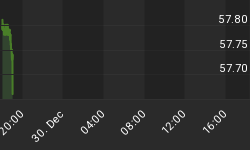The decline in the November Chicago PMI to 49.9 from 53.5, marks the first sign of a contraction (sub 50) in 3 ½ years (April 2003), evidencing broader evidence of a weakening US economy. Signs of weaker job markets and lower inflation in the Midwest area are seen through the 49.4 and 60.5 readings in the employment and prices paid indices.
Today's PMI releases further bolsters our forecast of 4 weeks ago for a sub-50 reading in tomorrow's release of the manufacturing ISM, especially since the monthly growth rate this year stood at -0.8%. A figure below 50 will play a significant role in raising market odds of a Q1 rate cut.
The 34K rise in weekly jobless claims to a 13-month high of 357K, lifted the more stable 4-week average to 325K, also the highest in over a year. Whether the jump in weekly jobless claims is a result of a weekly volatility or a reflection of labor market weakness remains to be seen. The data certainly puts in perspective Fed Chairman Bernanke's upbeat remarks on labor markets, indicating that "the labor market has tightened further".
With today's release of core PCE price index remaining at 2.4%, it makes the real fed funds rate at 2.9%, the highest in 3 months when the figure stood at 2.93%. But as the charts show below, the upper chart indicates that real fed funds rate has remained at the high range for the past 5 months, long enough to begin casting a dampening on the labor market, as seen through the clear rise in the jobless claims in the lower chart.

Despite the continued declines in 10-year yields to 4.49%, we cannot step up our expectations of a Fed rate cut until we see further increases in jobless claims, with the 4-week average attaining the 350K from its current 325K. Next week's payrolls release should provide a broader dissection of the labor markets picture, showing whether the erosion of manufacturing and construction jobs continues to stand out relative to the recent expansion in services jobs.
As we mentioned earlier today, sterling's rise versus the dollar is partially explained by Bank of England's shrugging of the latest strengthening because the dollar holds a smaller weight than the euro in sterling's trade weighted index. While sterling is currently at 1.9644 to US$1.00, it is at 1.4821 to EUR1.00, well below its 2 week high of EUR1.4990. Cable resistance escalates to 1.9700 and 1.9740. Odds of $2.00 before year end stand at 80%. EURUSD resistance lifted at to 1.3265-70, followed by 1.3320. The relative consolidation of the past 3 days may renew the euro's runup towards the 1.33 figure, but the MACD measures do point to a temporary slowdown in the momentum of the uptrend.
















